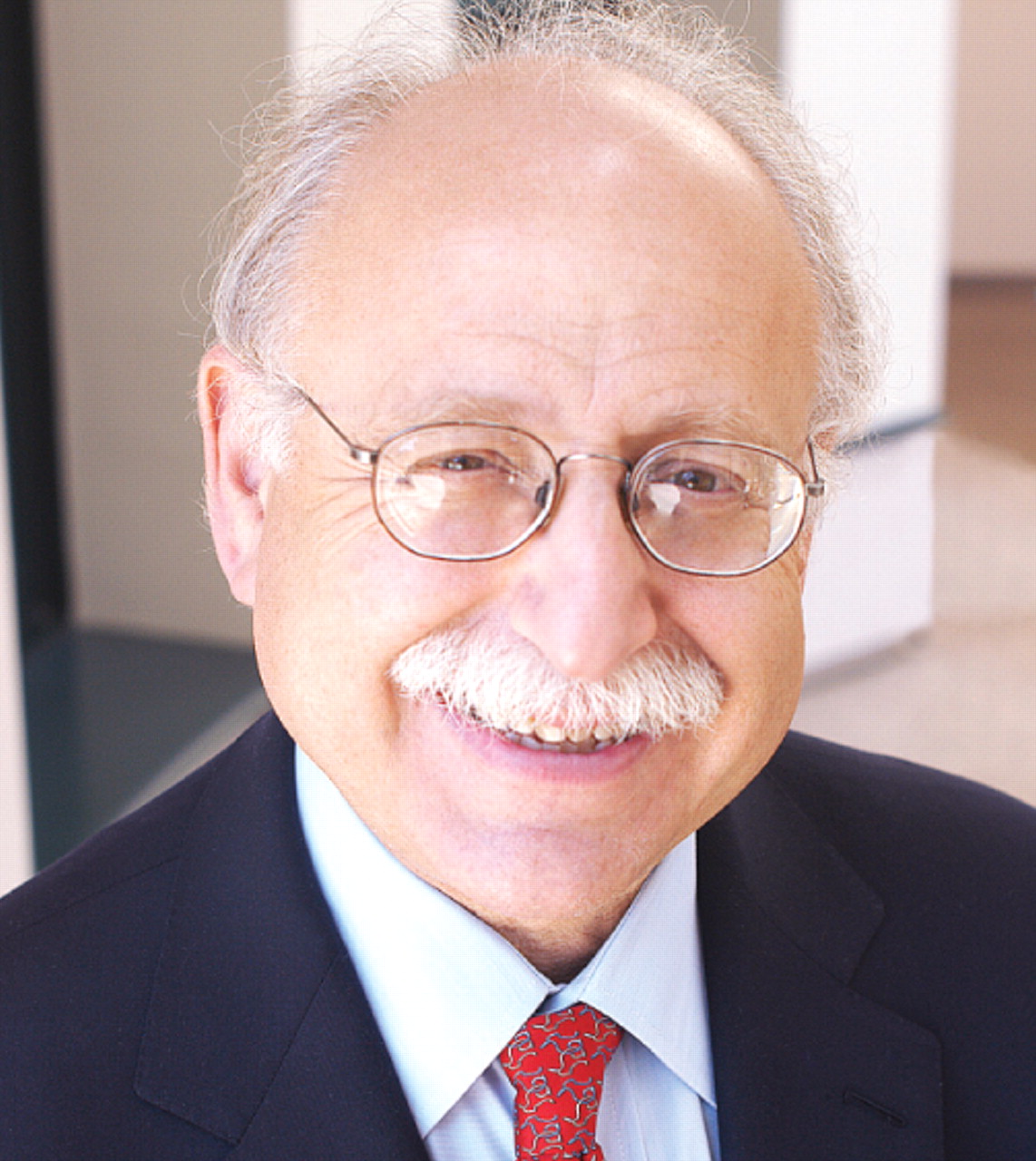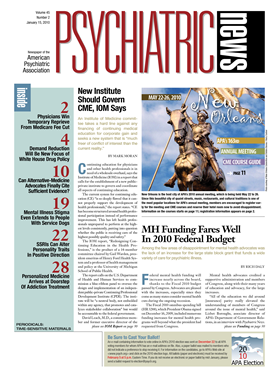The recent Board of Trustees meeting has prompted this column on APA governance. At that meeting, the Board made significant cuts to APA's 2010 budget. It reduced the total grant funds that can be accessed by the district branches to support infrastructure and lobbying and reduced funding for district branch administrators' attendance at training and networking meetings, APA's Advocacy Day, and Board special projects. It decided not to accelerate into the 2010 budget the cuts recommended by the Finance and Budget Committee in the Assembly budget for 2011. These were difficult decisions, based on priorities and the recognition that further cuts for 2010 could not be implemented by the Assembly. Its leadership has pledged to reorganize and improve efficiency. For 2011, an additional $200,000 in cuts will go into place unless there is a further, major reorganization.
These cuts come on the heels of major reductions made by Dr. Jay Scully, our medical director, and his staff to the tune of nearly $6.9 million in expenses in 2009, as well as the cuts made by the Board for the past year. APA staff have over the past two years experienced several cost-cutting measures including hiring freezes initially and then actual reductions in force, limitations on travel, and an elimination of salary increases. In late 2008, the Board approved for the 2009 budget a drastic cut in the components' budget of some $400,000 from its previous $800,000 budget, and this necessitated a reorganization of the components structure. In the process, we eliminated about 70 percent of the positions on councils and committees. While this change enabled us to live within our budget and hopefully to maintain our key functions, there was considerable concern about and opposition to the reduction of member participation in the component and governance structure.
The Board also reduced its 2009 budget (including that for the Joint Reference Committee) by about 15 percent from a maximum of some $780,000 to $670,000 and eliminated one of its four full meetings. Meanwhile, Dr. Carol Bernstein, our president-elect, is chairing the Task Force on Governance, which is reviewing the reorganization of APA overall, including its councils and other components, to determine what changes—including reinstatement of some components—are needed.
From my perspective, we need to consider whether we are spending money wisely on governance and if it is cost-effective. Should we further cut our governance costs, and if so, how? The components have been slashed, probably overly so at this point. The Board has been cut, but APA needs a Board to fulfill its legally defined, fiduciary responsibilities. The Assembly, however, experienced few cuts in 2009; the larger reductions will occur in 2010, reducing its budget from about $1 million to $820,000 a year, later than the other branches.
The Assembly is a large structure with little direct authority. We are now spending more on branches that it was charged to represent and twice as much on it than we spend on the components. Does this make sense? While the Assembly develops position papers, eliminating components and staff to implement them can make the process superfluous. Elections to the Assembly are local, but the turnouts are relatively weak; some positions are uncontested, and there are no term limits.
Our election slates do not always tap into the breadth of possible candidates. The Nominating Committee for national officers and trustees is Assembly and Area Council based, not representative of the broad membership. I came to office through an unusual route—leadership in American Psychiatric Publishing Inc. Our nominating process has made it at times difficult to garner the widest representation of candidates for the Board. And while the officers and some trustees are elected by the full membership, others are elected only by their Area. APA is not like the national Congress; Board members' legal and fiduciary responsibilities are to the whole APA. Any attempt to waive or change these fiduciary duties would be contrary to legal requirements and therefore void. Nonetheless, the structure promotes Board members' seeing themselves as representatives of the Area members who elected them. Other ex officio members of the Board come from their positions in the Assembly and may feel a duty to that organization in potential conflict to the needs of the Association as a whole. This structure does not appear to be optimal.
In spite of financial difficulties, we continue to strengthen our functioning. During my campaign, I pledged to restore pride in what we do as psychiatrists and to bring the best back into our organization. To date, we have enhanced the content of APA's Institute on Psychiatric Services—producing a more comprehensively clinical and cutting-edge focus and resulting in our most successful institute to date, with over 2,000 attendees in New York City last fall. We are finalizing the program for the 2010 annual meeting in May in New Orleans, which will be a dynamite scientific and clinically useful congress. More information will be available in the February 19 issue. Much of this has happened because of increasing involvement of our colleagues from the academic and subspecialty communities. Additionally, working with Dr. Joe Rubin, our Membership Committee chair, we are starting a campaign to re-engage members from the academic community as well as considering ways to interact more actively and effectively with members of the psychiatric subspecialty organizations.
Our members need to weigh in as to what balance we should have in the Association's governance. These issues need to be addressed if APA is to flourish and have the absolutely best and most wide representation of psychiatrists as members and ultimately as its leaders. Events over the last couple of years have only reinforced my doubts as to whether the current structure optimally supports our needs.


